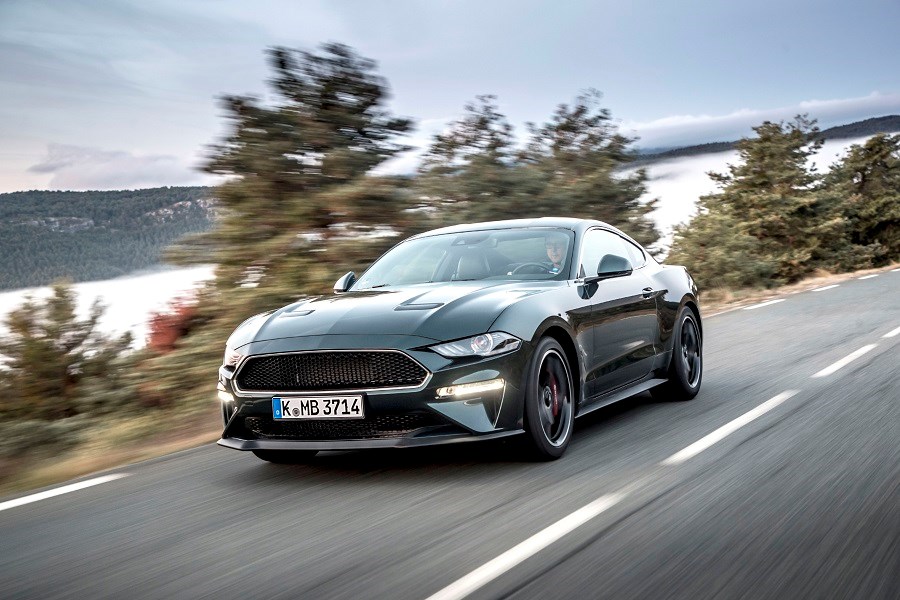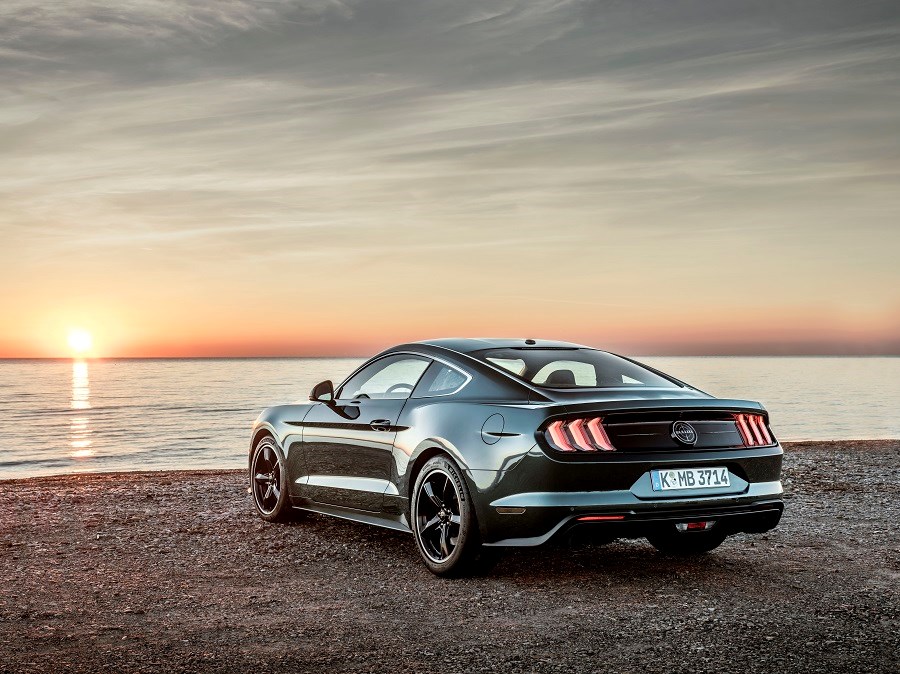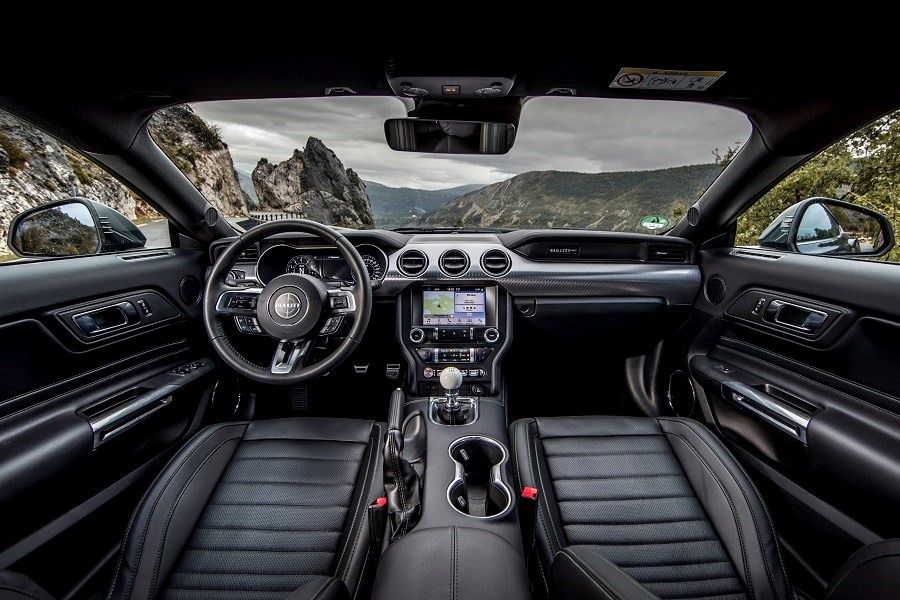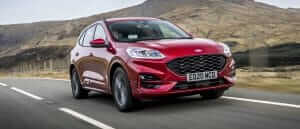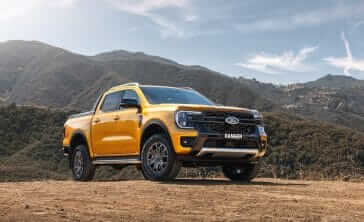Model Review
Ford’s sixth-generation Mustang was introduced in 2014 with a promise that—for the first time—it would officially be produced from the factory in right-hand-drive, in answer to the demand from Australia (first and foremost), followed by the UK and Japan.
The excitement that gathered around the car’s launch wasn’t tempered by a poor showing in Euro NCAP crash tests, with the Mustang’s beguiling looks and thumping V8 soundtrack being enough to reel buyers into showrooms regardless.
With a list price below £40,000, that initial Mk 6 Mustang was incredible value—a 5.0-litre V8-engined muscle car for half the price of comparable performance models from other manufacturers.
The Mustang went into production in July 2014, with the first ‘Export GT’ models being finished in early 2015, which is when UK sales began.
The GT was followed by an entry-level 2.3-litre model—the Mustang EcoBoost—with a four-cylinder engine. It might not sound quite as exciting, but the four-pot Mustang is barely a second slower to 60mph than the V8, and makes for an interesting and affordable alternative for those who put looks above all else.
Latest model
The Mustang got a minor facelift in 2018, with a few modifications to bring the car’s technology up to date and to redress that poor Euro NCAP performance that the first incarnation of the sixth-generation Mustang recorded.
As a result, it now gets pre-collision assist with pedestrian detection technology, as well as lane-keep assistance.
At the same time as the safety improvements, the Mustang’s V8 received some minor improvements. The power output was increased to 444bhp from 410bhp, with the torque output unchanged at 529Nm.
Another quirky feature is the Mustang’s ‘Good Neighbour Mode’, which deliberately turns down the exhaust note during certain times of the day to avoid unsettling the peace.
Ford has also introduced ‘MagnaRide’ adjustable suspension, which adjusts the damper stiffness and spring rates depending on the driving mode.
The four-cylinder EcoBoost Mustang appeared concurrently with the facelift.
Value for money
One of the biggest things to appeal about the Mustang when it first appeared on British shores was its incredible value for money, and if anything that rings even truer today.
If you can live without the V8, then the GT model can be had for less than £34,000, with the Mustang convertible costing an additional £3,500 on top.
If you can stretch to the V8 (if you can, then you should) it’s still substantially less than £40k, £38,165 with a manual gearbox and £39,665 with a five-speed automatic.
There’s nothing particularly high tech or futuristic about the Mustang, but that makes it far less expensive than many of its contemporaries, as you don’t end up paying for tech that you don’t need.
While the list prices are surprisingly affordable, don’t think for a minute that the Mustang skimps on standard equipment. It’s well equipped with keyless entry, a limited-slip diff, xenon headlamps and Ford’s SYNC 3 infotainment system as standard.
Looks and image
There aren’t many cars on sale today that make you want to cast a glance backward after you’ve parked them up, but with the Mustang you simply can’t help it.
It manages to beautifully combine the traditional and the modern with the silhouette of the original Mustang which is immediately evident in its profile, this is alongside several modern styling touches as well.
The 2018 facelift saw some minor tweaks to the front-end, so there are now air vents on the bonnet and slightly different daytime running lights, while the front wheel arches flare outwards to help deflect air flow.
The in-your-face muscle car appeal of the Mustang remains, while the rear lamp clusters still echo those of the 1964 original.
The retro appeal continues inside, too, with a dashboard and three-spoke steering wheel that again recreate the look of the classic original Mustang in a more modern context.
Space and practicality
While a Mustang might not a be a car you go out of your way to buy for its practicality, it fares better than most performance cars when it comes to interior space and practicality.
For starters, in coupe form it’s a true GT with ISOFIX fixtures in the rear seat to accommodate child seats, so if you want to try and justify getting one as a family car than the spec sheet is on your side.
While space in the rear is acceptable for a GT, the front of the cabin feels a little cramped—the wide centre console and slab-like dash give it a slightly claustrophobic air, while some of the controls feel a bit clunky and old-fashioned. They also aren’t especially well laid-out from an ergonomic point of view.
Throw in some cheap plastics and fabrics and it’s clear that some of the Mustang’s rivals do the whole interior thing better, but they’re also a lot more expensive.
The Mustang also has quite a good boot, for the coupe model at least. You’ll get a pram in their if you need to, which— allied to the ISOFIX—means you can still own an attractive family car.
Engines
Mustang buyers get to choose between a 2.3-litre four-cylinder EcoBoost engine or a big 5.0-litre V8, the latter of which is better suited to its brutish character.
The 2.3-litre four-cylinder Ecoboost petrol engine is around 10mpg more economical than the V8 without being that much slower—0-60mph takes just 5.8 seconds and it has a top speed of 145mph, so the 2.3 is hardly a slouch.
But the V8 is so central to the Mustang’s appeal that it remains the best-seller. The 5.0-litre unit has 444bhp on tap, and can hit 60mph from a standstill in 4.8 seconds, with an electronically limited top speed of 155mph. But it’s not the performance that’s the thrill, so much as the way in which the Mustang delivers it.
Running costs
Keep the sensible purchase price in the front of your mind as it’ll help to offset the running costs of the Mustang, which won’t be cheap.
The V8 model emits 299g/km of CO2 so falls into the highest road tax bracket, while insurance is also steep. Plus, while Ford’s quoted mpg figure is a sensible sounding 31.2, realistically you’ll only achieve this if you drive it in ballet shoes.
The 2.3-litre fares much better —CO2 emissions are 179g/km and it offers 41.2 mpg combined, which is a much more realistic proposition. But it’s no V8.
Things to look for
There aren’t any major mechanical problems with Mustangs but some owners have experienced electrical faults. Worn anti-roll bar bushes and drop links are common on higher mileage cars but a replacement isn’t expensive, although it’s worth listening for a clonk from the front end over bumps and rough surfaces.
Rivals
There’s only one true rival to the Mustang, and that’s the Chevrolet Camaro which is still officially imported to the UK despite the disappearance of mainstream Chevrolet models in 2014. Prices aren’t dissimilar, but the Chevy is only available with left-hand-drive.
Other coupes that offer similar performance at a sensible price include the Nissan 370Z and Audi S5.
Depreciation
The Mustang is quite cheap to start with but demand is strong, meaning it holds its value well—expect whatever model you opt for to retain around 55 per cent of its value after three years.
